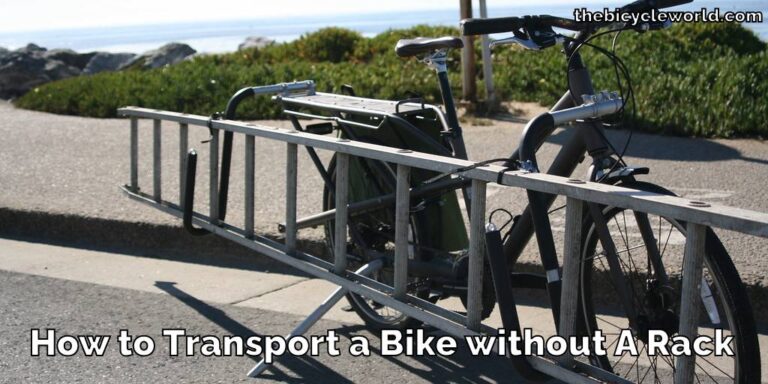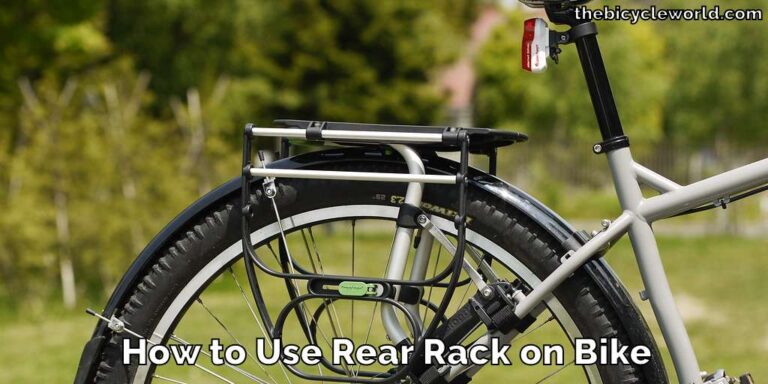How to Carry Groceries on A Bike
Introduction
Carrying groceries on a bike emerges as a practical solution. This method is not just environmentally friendly but also adds an element of physical activity to our daily routines.
Biking with groceries might seem challenging at first, but with the right approach, it can be a smooth, enjoyable experience.
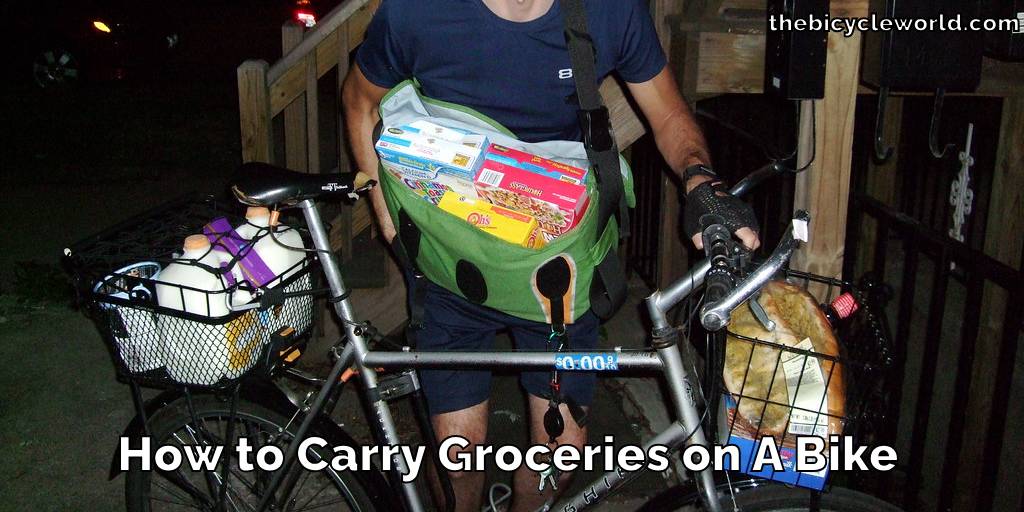
This guide will jump into the essentials of how to carry groceries on a bike. Whether you’re a seasoned cyclist or a beginner, these tips will ensure your grocery trips are both successful and enjoyable.
Why You Need to Carry Groceries on A Bike
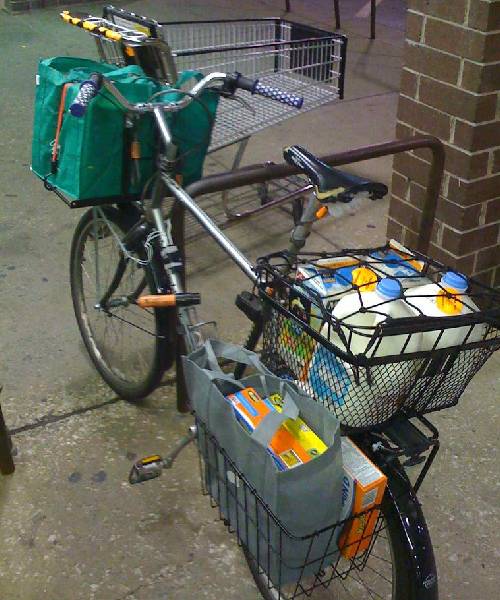
Opting to carry groceries on a bike is a choice that brings numerous benefits. Firstly, it’s a fantastic way to reduce your carbon footprint. Bikes emit no pollutants, making them a much greener option compared to cars. Secondly, it’s an excellent form of exercise.
Cycling, even at a moderate pace, can help improve cardiovascular health and build muscle strength. Additionally, it’s often quicker and more convenient in crowded urban areas. You can easily navigate through traffic, and parking is a breeze.
Also, considering the rising fuel costs, biking can be a cost-effective alternative. It’s not just about the destination but the journey biking can transform a mundane task like grocery shopping into a refreshing outdoor activity.
Tools We Need to Carry Groceries on A Bike
To make your grocery trips on a bike both easy and safe, there are several key tools and accessories that you should consider:
- Bike Racks: A robust bike rack attached to the rear of your bike plays a vital role in balancing heavy loads. It’s the foundation for attaching other accessories like panniers or baskets. Make sure the rack is firmly fixed to your bike and can handle the weight of your groceries.
- Panniers: Panniers are special bags made just for bikes. They hook onto your bike rack and sit on either side of the bike. This positioning helps keep the bike stable and balanced, even with a heavy load. They come in various sizes, so you can choose ones that fit your shopping needs. Some panniers are also waterproof, which is great for protecting your items on rainy days.
- Baskets: Baskets can be attached to the front handlebars or on the bike rack. They are perfect for smaller, lighter loads and give you easy access to your items while riding. Baskets are a good choice if you’re just picking up a few things or if you want to keep an eye on delicate items like bread or eggs.
- Bungee Cords or Straps: These are incredibly useful for securing your groceries. You can use them to tightly hold items in the baskets or panniers, preventing movement or spills while you ride. They are especially handy for odd-shaped items that might not fit well in a bag.
- Backpacks: For a small amount of groceries, a backpack can be a straightforward solution. It’s easy to carry and leaves your bike free of extra attachments. Plus, using a backpack helps distribute the weight across your back, which can make for a more comfortable ride.
Each of these tools serves a unique purpose in helping you transport groceries efficiently and safely on your bike. The right combination will depend on the amount and type of groceries you’re planning to carry, as well as your own comfort and bike type.
How to Carry Groceries on A Bike
Transporting groceries by bike can be a smooth and efficient process with the right preparation and techniques. Here are the detailed steps to follow:
Choose the Right Bike
The first step is making sure your bike is suitable and in good shape. A bike with a solid frame and reliable brakes is crucial when you’re adding extra weight. Also, consider the size of the bike – it should be comfortable for you to handle even when loaded.
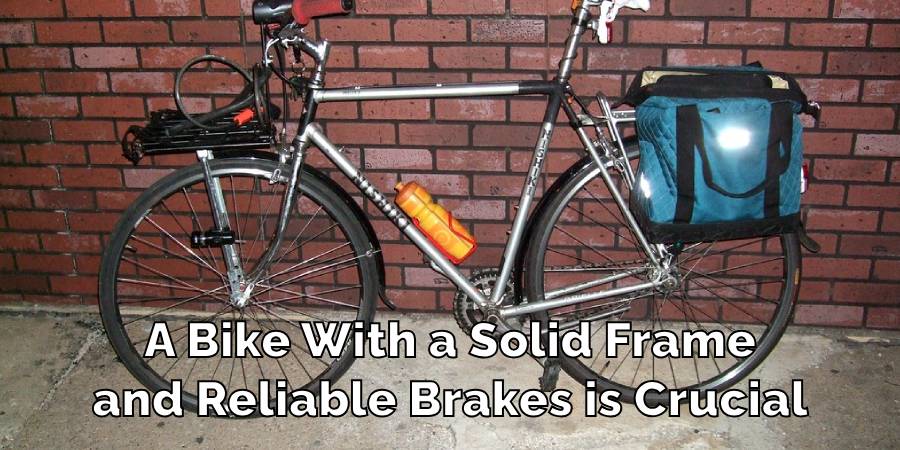
Install a Bike Rack and Accessories
Next, equip your bike with the necessary gear. A bike rack is essential, and you can choose from rear or front racks depending on your bike and preferences. Add panniers or baskets for carrying the groceries. These accessories should be sturdy and easy to attach or remove.
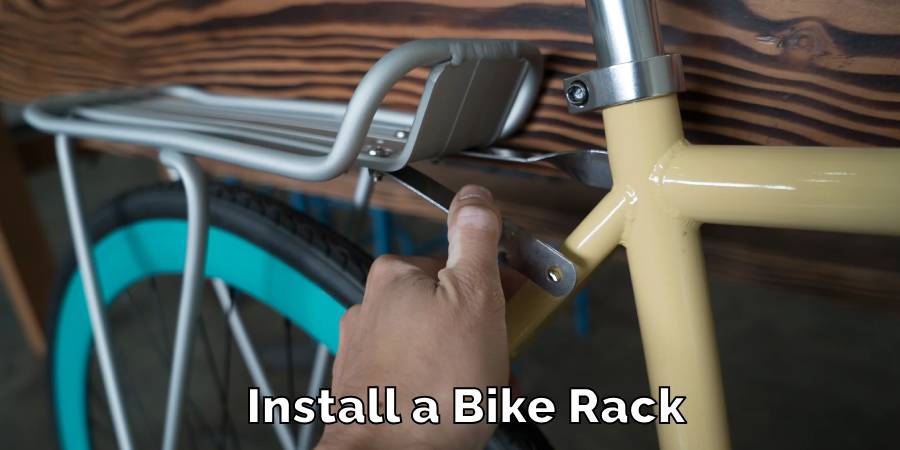
Pack Smartly
When packing your groceries, balance is key. Distribute the weight evenly between panniers if you’re using them. Place heavier items like cans and bottles at the bottom and lighter, more fragile items like bread or eggs at the top. This way, you prevent crushing delicate items and ensure the bike won’t be off-balance.
Secure Your Load
To avoid any accidents or spills, it’s important to secure your groceries. Use bungee cords or straps to keep items in place, especially if you’re using a basket. If you’re riding with a backpack, make sure it’s zipped up and sits comfortably on your back.
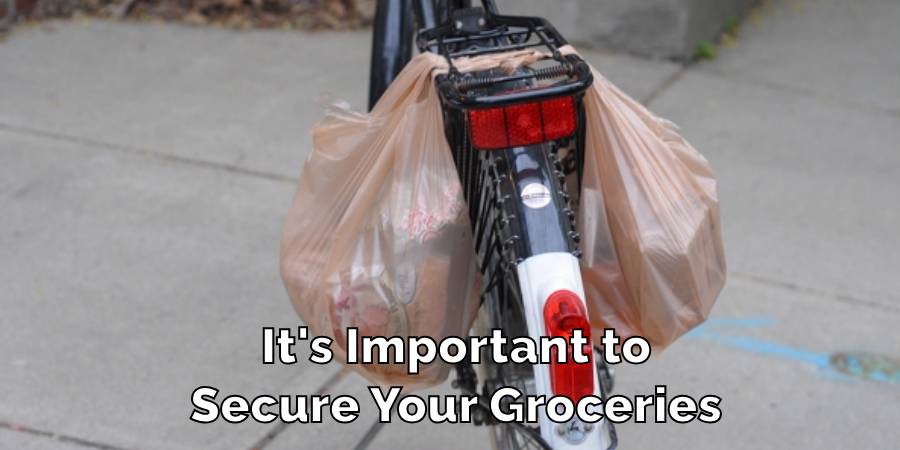
Test the Weight
Before setting off, do a quick test ride around your area. This will help you feel how the bike handles with the added weight. If it feels too heavy or unbalanced, adjust the load accordingly. This step is crucial for your safety.
Ride Carefully
With groceries, your bike will feel different, especially when turning or stopping. Ride at a moderate pace, take turns gently, and give yourself plenty of time to stop. Stay alert and be aware of your surroundings, especially in traffic.
Lock Your Bike Properly
Once you reach your destination, it’s important to secure your bike. Use a strong lock for both the bike and any detachable accessories like panniers. If possible, lock your bike in a visible, well-lit area.
Mind the Road Conditions
Be extra cautious on uneven roads, potholes, or slippery surfaces. Such conditions can affect your balance and the stability of your groceries.
Plan Your Route
Choose a route with less traffic and smooth roads. Avoid steep hills if possible, as they can make your ride more challenging with the extra weight.
Regular Maintenance
Regularly check your bike for any maintenance needs, especially when you’re using it for heavy loads. This includes checking tire pressure, and brakes, and ensuring the rack and accessories are securely attached.
By following these steps, you can ensure a safe and enjoyable experience when carrying groceries on your bike. It’s a great way to combine a routine chore with physical activity and environmental consciousness.
Precaution While Carrying Groceries on A Bike
Ensuring safety is crucial when you’re carrying groceries on a bike. Here are some important precautions to keep in mind:
- Check Your Bike Regularly: Before every trip, give your bike a quick check. Pay special attention to the brakes and tires, as they are vital for safety, especially when carrying extra weight. Ensure the tires are properly inflated and the brakes are functioning well.
- Wear a Helmet: This is a basic but essential safety measure. A helmet can protect you from serious injuries in case of an accident. Choose a helmet that fits well and is comfortable to wear.
- Be Visible: Make sure you’re easily seen by other road users. Use lights on your bike, both front and rear, particularly in early mornings, evenings, or cloudy days. Wearing clothes with reflective strips or using reflective gear on your bike will also help increase your visibility.
- Mind the Weather: Weather conditions can greatly affect your biking experience. Be extra cautious in wet, icy, or windy conditions, as these can impact your bike’s handling and stability. If the weather seems too harsh, it might be safer to postpone your trip.
- Know Your Limits: It’s important not to overload your bike. An excessively heavy load can make the bike hard to control and increase the risk of accidents. If you feel the load is too much, it’s wiser to split your groceries into smaller, more manageable amounts and make multiple trips.
- Plan Your Journey: Choose routes that are bike-friendly and less crowded. Avoid roads with heavy traffic or poor surface conditions.
- Use Proper Gear: If you’re carrying a significant amount of groceries, make sure your bike is equipped with the right accessories like a sturdy rack, panniers, or baskets. This helps in balancing the load properly.
- Stay Alert: Always be aware of your surroundings. Keep an eye out for pedestrians, other vehicles, and any potential hazards like potholes or roadworks.
- Practice Good Riding Habits: Signal your turns, obey traffic laws, and ride at a speed that allows you to react quickly to unexpected situations.
- Secure Your Groceries Well: Ensure that your groceries are packed and secured firmly. Loose items can fall off and cause accidents.
- Keep an Emergency Kit: It’s a good idea to carry a small emergency kit including a basic toolset, a spare inner tube, and a puncture repair kit. This can be a lifesaver if you encounter minor issues with your bike on the road.
By following these precautions, you can make your grocery trips on a bike safe and enjoyable. It’s all about being prepared and aware, ensuring both your safety and the safety of those around you.
FAQ’s
How Do You Secure Groceries to a Bike Rack?
Securing groceries to a bike rack effectively is important for a safe and stable ride. Panniers, which are durable bags designed for bikes, can be attached to the sides of the rack. They’re great for keeping your groceries in place.
For extra security, use bungee cords or straps. Wrap them around the bags and the rack to prevent any movement or bags slipping off while you’re riding. Make sure the cords are tight but not squeezing or damaging your groceries.
How Do You Carry Big Things on a Bike?
Transporting large items on a bike can be a challenge, but it’s not impossible. A bike trailer, which is a small cart that attaches to the back of your bike, is a great solution for bigger loads.
It’s essential to make sure the trailer is properly connected to your bike and that the weight is evenly distributed to avoid tipping. If you don’t have a trailer, you can use a larger bike rack. Secure the item to the rack with bungee cords, ensuring it’s stable and won’t shift while you ride.
How Do I Prepare My Bike for Transport?
Preparing your bike before loading it up is key. Start by checking the tire pressure – properly inflated tires make it easier to handle the bike with extra weight. Also, check your brakes to ensure they’re working well, as they’re crucial for safety.
Attach any accessories you’ll need, like a bike rack, panniers, or baskets. Once everything is loaded, do a short test ride to check the balance and adjust the load if necessary. This helps you get a feel for how the bike handles with the added weight.
Is Carrying Groceries Exercise?
Yes, biking with groceries is definitely a form of physical exercise. It’s a great way to work out your legs, arms, and core muscles. Cycling, especially with extra weight, helps improve your overall strength and boosts cardiovascular health. Plus, it’s a fun and practical way to incorporate physical activity into your daily routine.
How Do You Carry Food on a Bike?
Carrying food, especially perishables, requires a bit of planning. Insulated panniers are great for items that need to stay cool. Be sure to pack your food items carefully to avoid any spillage. For liquid items, use sealed containers to prevent leaks.
Place delicate items like bread, eggs, or fruits on top or in a separate compartment to avoid them getting squished. For added protection, you might wrap fragile items in a small towel or use bubble wrap.
Conclusion
Carrying groceries on a bike is more than just a transportation choice it’s a lifestyle adjustment that promotes environmental sustainability, physical health, and community interaction.
By following the guidelines and precautions outlined, anyone can integrate this practice into their routine, contributing positively to personal well-being and environmental conservation. This article has explored how to carry groceries on a bike.
Remember, the key to success lies in preparation and mindfulness. Happy cycling and happy shopping!

